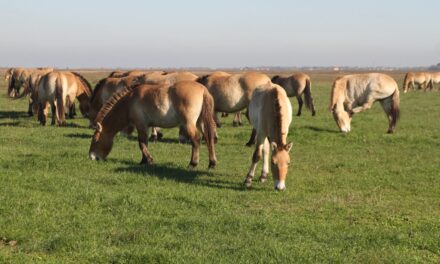Although few Hasidic Jews remained in Hungary after the Holocaust, Hungarian culture surprisingly lives on among the more than one hundred thousand ultra-Orthodox Jews in Brooklyn, reports OffBeatBudapest.
When I'm in New York, I have a favorite routine: I grab a cappuccino at a chic coffee shop in Brooklyn's Williamsburg neighborhood, then head south to the Hasidic neighborhood. Around South 9th Street, a whole other world unfolds before me; gone are the designer stores, the stylish hipsters and the luxury skyscrapers. Instead, the closed world of ultra-orthodox Jews emerges, writes Tas Tobias in his article published in OffBeatBudapest.
The men wear hats, long beards, sideburns, and black jackets, from which the white fringes of their prayer shawls protrude. They speak Yiddish and hurry through the busy streets glued to their phones. Women in wigs and dressed in long black skirts drive through the streets with baby carriages and their children around them. I am often the only non-Orthodox person on the street. All restaurants, grocery stores and pastry shops are strictly kosher, most with Yiddish signs. It is a surreal experience to observe this isolated world in the middle of New York.
I like to go up to old men and ask them for directions - in Hungarian. Almost without exception, they answer in fluent Hungarian, with the charming language of the countryside. Few people know that Brooklyn's ultra-Orthodox Hasidim originate from 19th-century Hungary. Hasidism, a branch of Orthodox Judaism, found fertile ground among the Jews living in the poor, rural communities of northeastern Hungary.
In contrast to the secular, assimilated Jews of Budapest and other big cities, the Hasids opposed integration, adhered to ancient traditions, and formed large hereditary dynasties (or sects) under the leadership of a respected rebbe.
After the Holocaust, when almost everyone was killed, the survivors fled Hungary and rebuilt their communities from the ashes in the newly founded Israel and the United States.
Today, more than 150,000 ultra-Orthodox Jews of Hungarian ancestry live in Brooklyn, mostly in the Williamsburg and Borough Park areas. The largest dynasty is the Szatmári, named after Szatmárnémeti, located in today's Romania, where the charismatic rebbe, Joel Teitelbaum, gained many followers. Teitelbaum fled the deportations and went to New York in 1946, where he successfully revived the community.
Other important Hungarian Hasidic groups in Brooklyn are the Munkacs, Pápai, and Cluj dynasties, as well as smaller ones such as the Kaliv (Nagykálló), Kerestir (Bodrogkeresztúr) and Liska (Olaszliszka).
"Some of these localities fell outside the borders of Hungary after the First World War, but the Jews there considered themselves Hungarians"
said Yosef Rapaport, a respected community leader living in Borough Park.
"My mother came from Mihályfalva, my father from Halmi, both of them already belonged to Romania at the time, but they spoke Hungarian at home. In fact, the vast majority of Orthodox Jews in Brooklyn today speak Yiddish with a Hungarian accent."
There are dozens of Hasidic sects in Brooklyn, many of them Hungarian, others Polish, Russian, and Ukrainian. They may look uniform from the outside, but there are subtle differences between them.
"Hungarian Hasidim have a reputation for being hospitable and that a real Hungarian family always cooks something, or that the cafeteria in a Hungarian synagogue is well-equipped and free to use"
said Alexander Rapaport, son of Yosef and owner of Masbia, a nonprofit free kitchen network.
“Women tend to be more collected; they are more modest, they dress in a very Hasidic way, but you can see that they are Hungarian"
- He told.
The continuation of OffBeatBudaepest's article here .
Featured image: Ultra-Orthodox Jews in New York / Wikipedia













